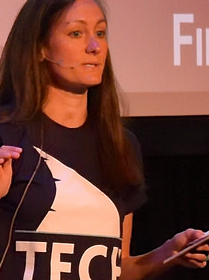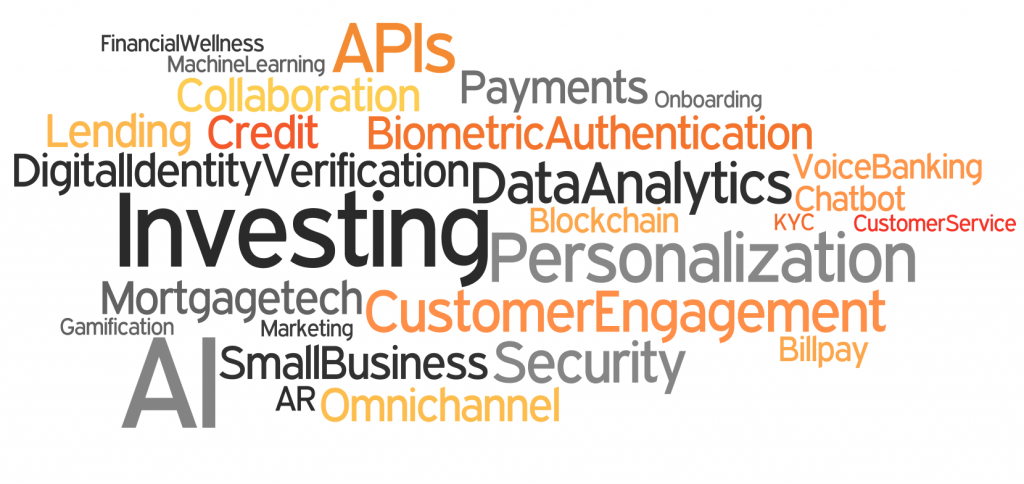Fintech Trends: the Expected, Unexpected and What’s Next at FinovateFall
 By Julie Muhn, Finovate
By Julie Muhn, Finovate
Anyone who works in fintech knows that the past few years have been a roller coaster ride of trends. So what’s next? How will the year close out?
As we wait for the next four months to unfold, one of the best indicators of fintech trend swells is to watch what companies showcase at FinovateFall (coming up Sept. 11-14). The graphic below shows some of the big trends we’ll see from the demoing companies.

Here’s my take on these themes:
The Expected
- APIs
Consumers have come to expect a seamless user experience to better manage their finances. Because of this, banks and smaller financial institutions are beginning to see the value in API-based, plug-and-play add-ons to their existing mobile apps. Therefore, the emergence of APIs as a large trend was expected.
- Security
Security has been around since the dawn of man (think fences and moats). As long as there are hackers, security will be in high demand.
The Unexpected
- Billpay
Billpay was a significant trend pre-2010 (and pre-smartphone), so it was surprising to see it’s resurgence. The myriad of enabling technologies likely plays a role in the era of billpay 2.0.
- Blockchain
It is not that the blockchain trend itself was unexpected this year—it was however, unexpected that it has taken so long to become this prominent. Finovate generally sees at least one or two demoing companies leveraging the blockchain, but in next month’s show the enabling technology is more of a common thread.
What to Watch
- Augmented reality
Augmented reality is still in its infancy, especially in fintech. The Pokemon Go phenomenon taught us that users crave a new way to engage and communicate with the world. If we’ve learned anything from the fintech revolution, it is that once this type of user experience becomes commonplace, users will grow to expect it.
- Mortgagetech
In the U.S., mortgagetech has been a rising trend in 2017. With room for disruption mixed with outcries for housing reforms, expect to see a mortgagetech growth spike in the next couple of years.
- Credit scoring
Big data, artificial intelligence and users’ growing online footprints have created new ways to underwrite borrower risk. The desire to serve individuals with thin to no credit files, along with the need to create an unbiased lending approach, has altered the way underwriters think about credit-scoring techniques.
What’s Next
With four months left in 2017, I’ll step out on a limb and offer up a few predictions. As far as enabling technologies go, voice banking will start to snowball as Alexa and Google Home becoming more commonplace. Augmented reality will grow—but just slightly—and virtual reality, though it sparkles, will begin a slow death in fintech. Regarding broader industry trends, my colleague David Penn, research analyst at Finovate said, “more human/robo hybrids in the robo advisor field, continued embrace of biometrics solutions for mobile and online banking security, and a resumption in fintech investment for the balance of 2017.”
Want to make your own predictions? Come join us at FinovateFall Sept. 11-14 in New York. Register with Paybefore’s discount code Paybefore20 to save 20 percent on the current ticket price.
Julie Muhn has been covering the fintech world on the Finovate blog since 2011. She has attended 26 Finovate and FinDEVr events across the globe and hosted five events as emcee. You can follow her on Twitter at @julieschicktanz.
In Viewpoints, payments technology professionals share their perspectives on the industry. Paybefore presents many points of view to offer readers new insights and information. The opinions expressed in Viewpoints are not necessarily those of Paybefore.











































